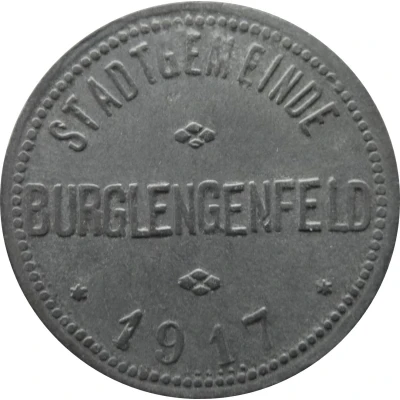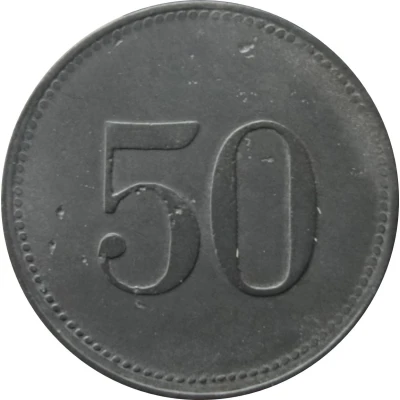


© Willem63 (CC BY-NC-SA)
50 Pfennigs - Burglengenfeld
1917 year| Zinc | 2.5 g | 22.3 mm |
| Issuer | City of Burglengenfeld (Federal state of Bavaria) |
|---|---|
| Emperor | William II (Wilhelm II) (1888-1918) |
| Type | Standard circulation coin |
| Year | 1917 |
| Value | 50 Pfennigs (50 Pfennige) (0.50) |
| Currency | Mark (1914-1924) |
| Composition | Zinc |
| Weight | 2.5 g |
| Diameter | 22.3 mm |
| Thickness | 1.1 mm |
| Shape | Round |
| Technique | Milled |
| Orientation | Medal alignment ↑↑ |
| Demonetized | Yes |
| Updated | 2024-10-04 |
| Numista | N#313333 |
|---|---|
| Rarity index | 92% |
Reverse
Pearl rim, with denomination centered
Script: Latin
Lettering: 50
Edge
Plain
Interesting fact
The 50 Pfennigs - Burglengenfeld 1917 coin from the City of Burglengenfeld in Bavaria, Germany, is interesting because it was made of zinc, which was a unusual material for coins at that time. Most coins were made of metals like silver, gold, or copper, but the use of zinc in this coin reflects the economic and political circumstances of Germany during World War I, when there was a shortage of traditional coinage metals. The use of zinc in coins was a common practice in Germany during this period, and it is a unique feature of this coin that sets it apart from other coins of its time.